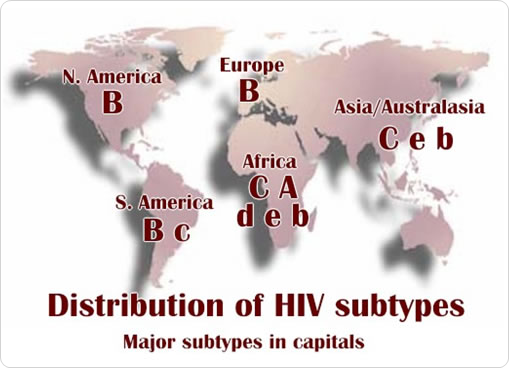Site Under Development, Content Population and SEO, Soft Launch 1st January 2020
HIV or Human Immunodeficiency virus is a retrovirus that was first found in 1983. The virus is responsible for causing AIDS (acquired immunodeficiency syndrome).
Once within the body the HIV infects cells of the immune system that form the body’s defence system and makes them unable to fight off infections.
The virus enters the immune system’s CD4 cells, which protect the body against various bacteria, viruses and other germs. The CD4 cells are then used to make thousands of copies of the virus. These copies then leave the CD4 cells, killing them in the process.
As the virus starts to multiply the CD4 cell count thus decreases dramatically. HIV infection takes nearly 10 years or more to manifest into full blown AIDS case.
HIV is thought to originate in Africa, where humans caught it from chimpanzees and other apes. The virus that affects the apes is very similar to HIV and is called SIVcpz (simian immunodeficiency virus). This virus spread to humans following contact with infected chimpanzee blood during the hunting of chimpanzees.
For many years the human type of HIV was limited to a remote part of Africa. With improved connections the virus began to spread worldwide.
The virus changes very rapidly and is easily able to evade many of the body's defence systems.
There are two types of HIV; they are HIV-1 and HIV-2 and they have many subtypes.
HIV-1 is the cause of the current worldwide pandemic while HIV-2 is found in west Africa but rarely elsewhere.
HIV-2, which is transmitted in the same ways as HIV-1, causes AIDS much more slowly than HIV-1. HIV-1 resulted from human infection by SIVcpz that infects chimpanzees and HIV-2 resulted from infection by SIVsmm harbored by sooty mangabeys. HIV-2 is closely related to the SIV found in west Africa.
The strains of HIV-1 can be classified into four groups: the "major" group M, the "outlier" group O and two new groups, N and P. These four groups may represent four separate introductions of simian immunodeficiency virus into humans.
Of these, Group O appears to be restricted to west-central Africa and group N is rare.
More than 90 percent of HIV-1 infections belong to HIV-1 group M. Within group M there are known to be at least nine genetically distinct subtypes (or clades) of HIV-1. These are subtypes A, B, C, D, F, G, H, J and K.
Occasionally, two viruses of different subtypes can meet in the cell of an infected person and mix together their genetic material to create a new hybrid virus. Many of these new strains do not survive for long. These are called "circulating recombinant forms" or CRFs. For example, the CRF A/B is a mixture of subtypes A and B.
